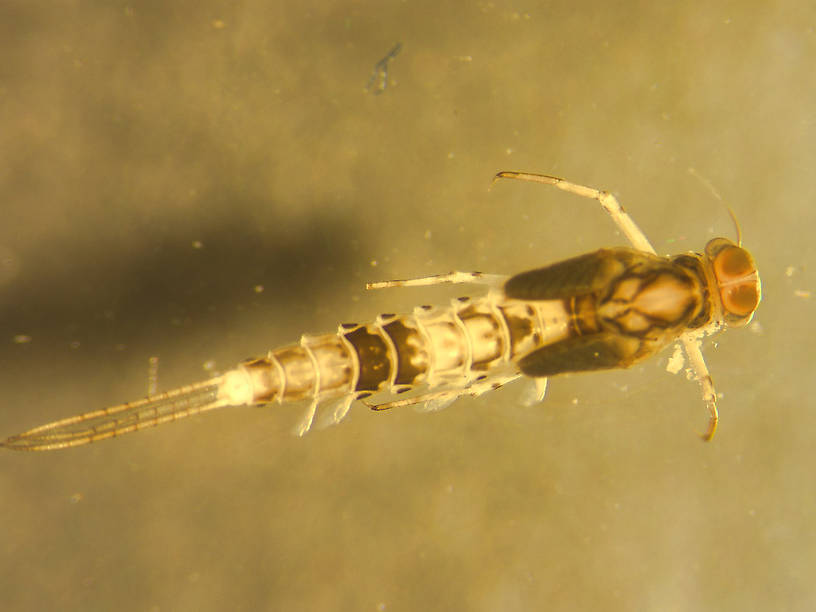
Salmonflies
Pteronarcys californica
The giant Salmonflies of the Western mountains are legendary for their proclivity to elicit consistent dry-fly action and ferocious strikes.


Mayfly Species Anafroptilum conturbatum (Tiny Sulphur Duns)
Species Range
Physical description
Most physical descriptions on Troutnut are direct or slightly edited quotes from the original scientific sources describing or updating the species, although there may be errors in copying them to this website. Such descriptions aren't always definitive, because species often turn out to be more variable than the original describers observed. In some cases, only a single specimen was described! However, they are useful starting points.
Male Spinner
Wing length: 5 mm
Abdominal tergites 2-6 of male imago hyaline white; inner margin of second forceps joint distinctly tuberculate; distal joint unusually long.
Turbinate eyes dark blackish brown, in dried specimen. Head and thorax shiny black; pleural sutures brownish. Legs white. Wings hyaline, venation pale (see fig. 165). Abdominal segments 2-6, and part of 7, hyaline white, sometimes with faint dusky shading posteriorly on the middle tergites. Tergites 8-10, and often part of 7, chocolate brown. Sternites white; 2-6 hyaline, 7-9 opaque. Tails white. Second joint of forceps distinctly tuberculate on its inner margin; third joint strongly bowed; distal joint unusually long (see fig. 168). The plate between the bases of the forceps is conical on its posterior margin.
Specimens of the Mayfly Species Anafroptilum conturbatum
1 Nymph

Start a Discussion of Anafroptilum conturbatum
References
- Knopp, Malcolm and Robert Cormier. 1997. Mayflies: An Angler's Study of Trout Water Ephemeroptera . The Lyons Press.
- Needham, James G., Jay R. Traver, and Yin-Chi Hsu. 1935. The Biology of Mayflies. Comstock Publishing Company, Inc.
Mayfly Species Anafroptilum conturbatum (Tiny Sulphur Duns)
Species Range
Common Name
Resources
- NatureServe
- Integrated Taxonomic Information System
- Global Biodiversity Information Facility
- Described by McDunnough (1929)

